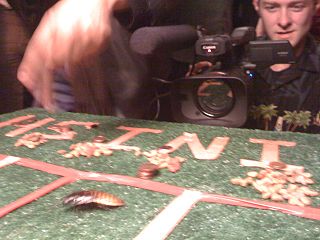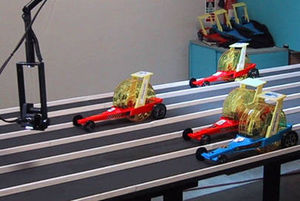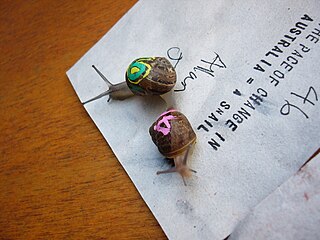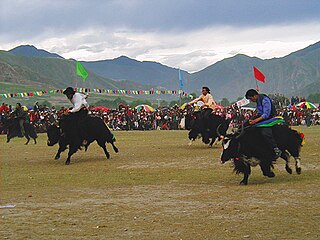 W
WAnimals in sport are a specific form of working animals. Many animals, at least in more commercial sports, are highly trained. Two of the most common animals in sport are horses and dogs.
 W
WThe Boulia Camel Races is an Australian camel race held annually every third weekend of July in Boulia, Queensland since 1997. Sometimes called the Melbourne Cup of camel racing, the event is home to the Thirsty Camel Cup, previously the Boulia Camel Cup, the longest camel race in Australia run over 1500 meters... Races are overseen by the regulatory body Racing Queensland.
 W
WThe Camel Cup is an annual camel racing festival held in Australia. The race usually takes place at Blatherskite Park in the town Alice Springs, Northern Territory. The event is organised by the Apex Club of Central Australia.
 W
WCamel racing is a popular sport in Western Asia, North Africa, the Horn of Africa, Pakistan, Mongolia and Australia. Professional camel racing, like horse racing, is an event for betting and tourist attraction. Camels can run at speeds up to 65 km/h in short sprints and they can maintain a speed of 40 km/h for an hour. Camels are often controlled by child jockeys, but allegations of human rights abuses have led to nationwide bans on underage labor in the UAE and Qatar. In modern camel racing, camels are often controlled by remote controlled robotic whips.
 W
WCockroach racing is a club gambling activity which started in 1982 at the Story Bridge Hotel in Brisbane, Queensland, Australia. The event is held on 26 January, Australia Day, and is given the title "Australia Day Cockroach Races". This type of racing has spread to many parts of the world including the United States. In North America, cockroach racing has recently become a popular feature for money, prizes, or just for its entertainment value. It is held in exhibitions promoting entomology where the public and entomologists participate.
 W
WGoat Racing is a sport that originated in Buccoo, Tobago, which is part of the twin-island republic of Trinidad and Tobago. The sport has been continued by some legends in Townsville. Started in 1925 by a Barbadian, Samuel Callendar, goat racing historically occurs on the Tuesday after Easter day, which is known as 'Easter Tuesday' in Trinidad and Tobago and is an unofficial public holiday in Tobago. Today, it is called the Buccoo Goat Race Festival, which is a popular and lively event that draws thousands of spectators, mainly from Trinidad. Also part of the festival is the less popular crab racing. In crab racing, large blue crabs and their jockeys are placed in the centre of a large circle drawn in the sand and coaxed towards the circle's perimeter by their jockeys through a bamboo pole with a string attached to the crab. The first crab to breach the circle is the winner. The Buccoo Goat Race Festival is Tobago's most internationally acclaimed festival.
 W
WHamster racing is a sport in which hamsters are placed in hamster wheels or hamster balls – often fitted to miniature racing vehicles – and raced down a straight 9 meter (30 ft) course. The hamster crossing the finish line in the shortest amount of time wins. According to a 2001 media report, the world-record time for this course setup is 38 seconds.
 W
WKambala is an annual buffalo race held in the southwestern Indian state of Karnataka. Traditionally, it is sponsored by local Tuluva landlords and households in the coastal districts of Dakshina Kannada and Udupi of Karnataka and Kasaragod of Kerala, a region collectively known as Tulu Nadu.
 W
WKarapan sapi is a traditional bull racing festival on the Indonesian island of Madura. Every year from about July through October, local bulls are yoked to wooden skids and raced for 130 meters, similar to a chariot race. There are several of these races throughout the season, and there is a final trophy race held in Pamekasan. The bulls participating in the event are adorned with gold and other decorations, and the event may be accompanied by Gamelan music, food, and wagers on the outcome of the race. A depiction of the festival was featured on the reverse of the 100 rupiah coin for Indonesia from 1991 to 1998. An Indonesian stamp issued in 2009 also depicted the race, along with the Surabaya–Madura Bridge.
 W
WMaramadi is a type of cattle race conducted in Indian state Kerala. It also known as Kalappoottu, or pothottam. The race is a traditional event, usually with bullocks, held after the monsoon but before the cattle are needed for planting.
 W
WThe pacu jawi is a traditional bull race in Tanah Datar, West Sumatra, Indonesia. In the race, a jockey stands on a wooden plough loosely tied to a pair of bulls and holds them by their tails while the bulls cover about 60–250 metres (200–820 ft) of muddy track in a rice field. Although the name means a "bull race", the bulls do not directly compete against each other, and no formal winner is declared. Instead, spectators judge the bulls by their performance, and have the ability to buy well-performing bulls, albeit at well above usual price. The people of Tanah Datar—especially the nagaris (villages) in four of its districts—have been conducting this tradition for centuries to celebrate the end of the rice harvest. The race is held concurrently with a village festival of culture called alek pacu jawi. Recently it has become a tourist attraction supported by the government and the subject of multiple award-winning photographs.
 W
WPig racing is a sport in which juvenile pigs race around in a small, enclosed area of either dirt, fake grass, gravel track or steel-framed enclosures. This racing is usually purely for entertainment or charity, and betting is rarely part of it, as the races are family-friendly events. It is often an attraction at county fairs but is also practised in many backyard setups. Pig racing can be found in Australia, Ireland, the United Kingdom, and the United States.
 W
WSled dog racing is a winter dog sport most popular in the Arctic regions of the United States, Canada, Russia, Greenland and some European countries. It involves the timed competition of teams of sled dogs that pull a sled with the dog driver or musher standing on the runners. The team completing the marked course in the least time is judged the winner.
 W
WSnail racing is a form of humorous entertainment that involves the racing of two or more air-breathing land snails. Usually the common garden snail species Cornu aspersum is used. This species is native to Europe, but has been accidentally introduced to many countries all over the world.
 W
WTurtle racing is an event in which participants typically place turtles in the center of a circle and watch them walk around until one of them crosses out of the circle. Initially popularized as an event geared toward children at county fairs and picnics in the Central United States, it has since grown in scope and popularity and other variations of the event have been held.
 W
WYak racing is a spectator sport held at many traditional festivals of Tibet, Kazakhstan, Kyrgyzstan, Gilgit-Baltistan, Ladakh and Mongolia, in gatherings which integrate popular dances and songs with traditional physical games. For Tibetans in particular it is very special festive occasion.